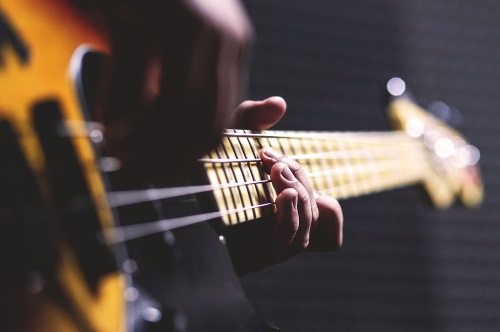Thanks to the world of DAWs, loops and samples, many producers, engineers, musicians and bands don’t know what the “groove” and the “pocket” of a song is.
Because most every recording is placed exactly on the grid, it’s easy to come up with a beat or song that’s perfectly in time but lacks a groove and doesn’t even sniff a true pocket that live players and listeners have been enjoying for decades. Here’s an excerpt from the 2nd edition of my Music Producer’s Handbook that describes the groove and pocket and what you might be missing.
All good music—regardless of whether it’s rock, jazz, classical, rap, or some new space music that we haven’t heard yet—has a strong groove.
You always hear about “the groove,” but what is it?
The “groove” is the pulse of the song and how the instruments dynamically breathe with it.
To your audience, the groove is an enjoyable rhythm that makes even the people that can’t dance want to get up and shake their booty. And while the concept of “the groove” is very subjective, the idea is well understood by experienced musicians at a practical, intuitive level.
Musicians who play funk and Latin tunes refer to the groove as the sense of being “in the pocket,” while jazz players refer to the groove as the sense that a song is really “cooking” or “swinging.”
A common misconception about groove is that it must have perfect time, but a groove is created by tension against even time. That means that it doesn’t have to be perfect, just even, and all performances don’t have to have the same amount of evenness. In fact, it makes the groove feel stiff, if the performances are too perfect.
This is why having perfect quantization of parts and lining up every hit in a workstation when you’re recording frequently takes the life out of a song. It’s time becomes too perfect because there’s no tension. The song has lost its groove.
Just about every hit song has a great groove, and that’s why it’s a hit. If you want to study what a groove really is, go to the masters: James Brown, Sly Stone, Michael Jackson, George Clinton, and Prince. Every song is the essence of what a groove feels like.
Groove is often thought of as coming from the rhythm section, especially the drums, but that’s not necessarily always the case. In The Police’s “Every Breath You Take,” for instance, the rhythm guitar establishes the groove. In most songs by the Supremes, Temptations, and Four Tops, from Motown’s golden age, the groove was established by James Jamerson’s bass.
How to find the pocket…
The phrase “in the pocket” is used to describe something or someone playing in such a way that the groove is very solid and has a great feel. When a drummer keeps good time, makes the groove feel really good, and maintains it for an extended period of time while never wavering, it’s often referred to as a “deep pocket.” It should be noted that it’s impossible to have a pocket without also having a groove.
Historically speaking, the term pocket originated in the middle of the previous century, when a strong backbeat (the snare drum striking on beats 2 and 4) became predominant in popular music. When the backbeat is slightly delayed creating a laid–back, or relaxed, feel, the drummer is playing in the pocket.
Today, the term “in the pocket” has broadened a bit. If, for example, two musicians (usually the bass player and the drummer) are feeling the downbeats together and hitting beat 1 (the downbeat) at the exact same time, they are said to be in the pocket.
Whether you’re playing ahead (in front) of the beat, behind (on the back of) the beat, or on top (in the middle) of the beat, as long as two musicians (for instance, the bassist and the drummer) feel the downbeat at the same time, they’ll be playing in the pocket.
You can read more from The Music Producer’s Handbook and Bobby’s other books in the excerpt section of bobbyowsinski.com.




















